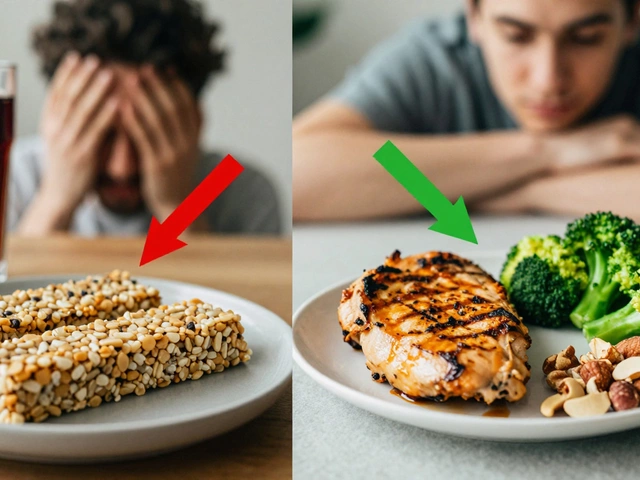Ayurvedic medicine, a holistic approach originating from India over 3,000 years ago, continues to be a popular alternative therapy worldwide. This article delves deep into the efficacy of Ayurvedic treatments, examining both historical and contemporary evidence. It highlights the principles of Ayurveda, various treatments, and their potential benefits while also touching on scientific perspectives and ongoing research. By exploring real-life applications and testimonials, we aim to provide a comprehensive view of how Ayurvedic practices can integrate with modern healthcare.
Read MoreNatural Healing Tips for a Pain‑Free Life
Feeling achy or stressed? You don’t always need a pill box to feel better. Simple changes in what you eat, the herbs you use, and daily habits can cut pain and boost energy. Below you’ll find practical steps that anyone can try right now, no fancy equipment required.
Ayurveda and Everyday Diet
Ayurveda teaches that food is medicine. The first thing to check is whether your meals are feeding the wrong dosha. For example, a lot of processed snacks, fried foods, and excess coffee can inflame a Pitta‑type body, leading to heat, irritability, and joint pain. Swap those for cooling foods like cucumber, cilantro, and sweet fruits. If you’re Vata‑dominant, focus on warm, grounding foods such as cooked carrots, oats, and ginger to stop dryness and tension.
Our post “Ayurveda Inflammatory Foods: What to Avoid (and What to Eat Instead)” gives dosha‑specific lists, so you can quickly spot the culprits in your pantry. The key is to replace one inflammatory item with a healing alternative each week – it’s a small step that adds up.
Herbal Supplements and Safe Use
Herbs can be powerful allies, but they’re not magic bullets. Ashwagandha, for instance, is popular for stress relief and joint comfort. Before you start, read the safety guide “Is Ashwagandha Safe? What You Need to Know Before You Try It.” It explains the right dose, who should skip it, and what side effects to watch for.
Other gentle herbs, like turmeric (with black pepper for better absorption) and boswellia, have documented anti‑inflammatory effects. Use them in cooking, teas, or as standardized extracts. Always start with the lowest recommended dose and give your body a week to adjust.
Beyond herbs, a balanced supplement routine can fill nutritional gaps. Our “5 Main Types of Supplements: Health Benefits, Safety, and Science” article breaks down vitamins, minerals, proteins, herbal extracts, and specialty formulas, helping you pick what truly matches your needs.
Combine these natural tools with movement and sleep basics. A 30‑minute walk after dinner, as discussed in “Does Walking Burn Belly Fat? The Truth Behind Walking for Weight Loss,” not only burns calories but also stimulates circulation, which eases sore muscles. Pair that with a regular bedtime aligned with Ayurvedic sleep cycles – aim to be in bed by 10 pm if you’re a Pitta or Kapha, and slightly later if you’re Vata.
Remember, natural healing is a lifestyle, not a quick fix. Start with one dietary swap, add a trusted herb, and watch how your body responds. If pain persists, consult a qualified practitioner to rule out deeper issues. With consistent, mindful choices, you’ll find relief without reaching for the pharmacy every time.





